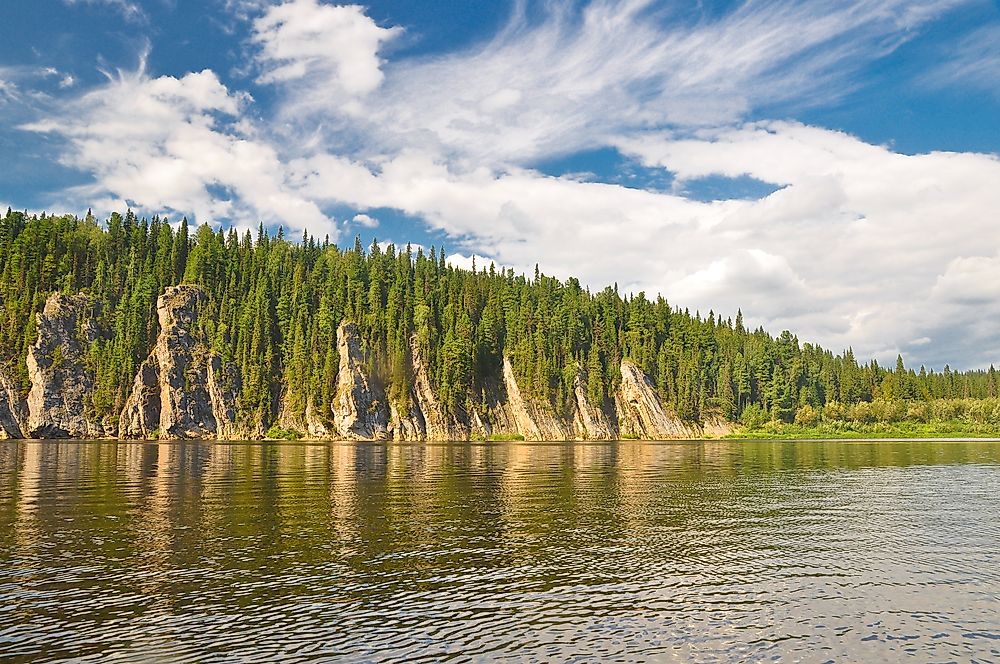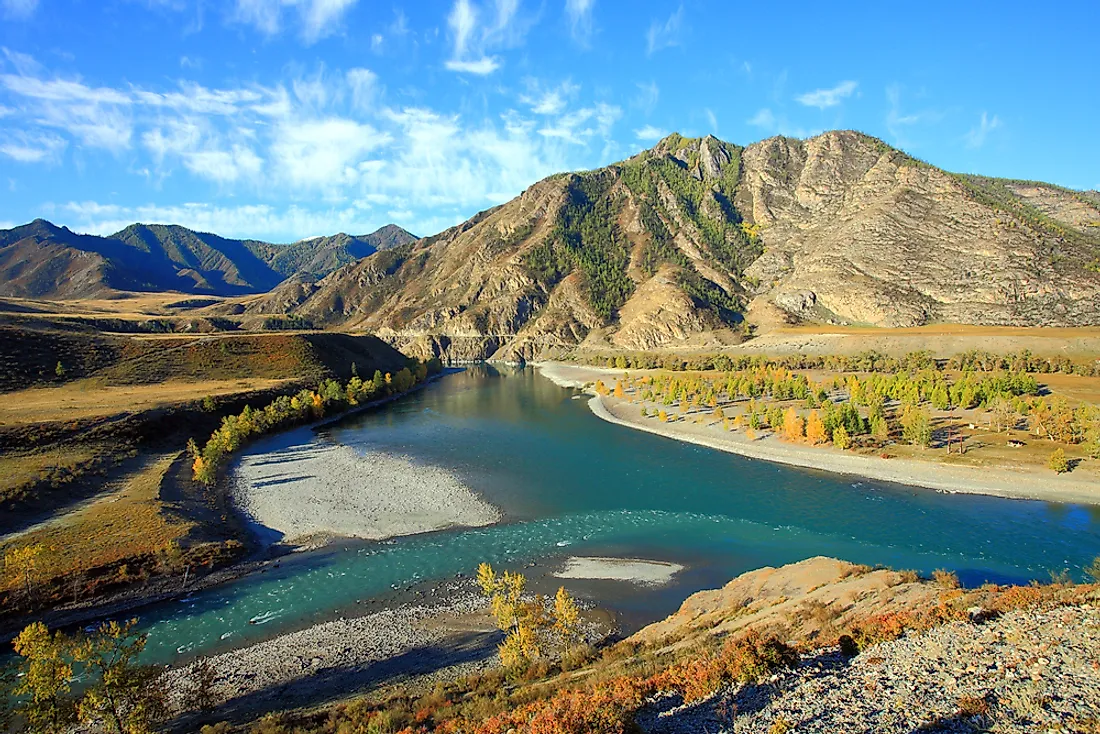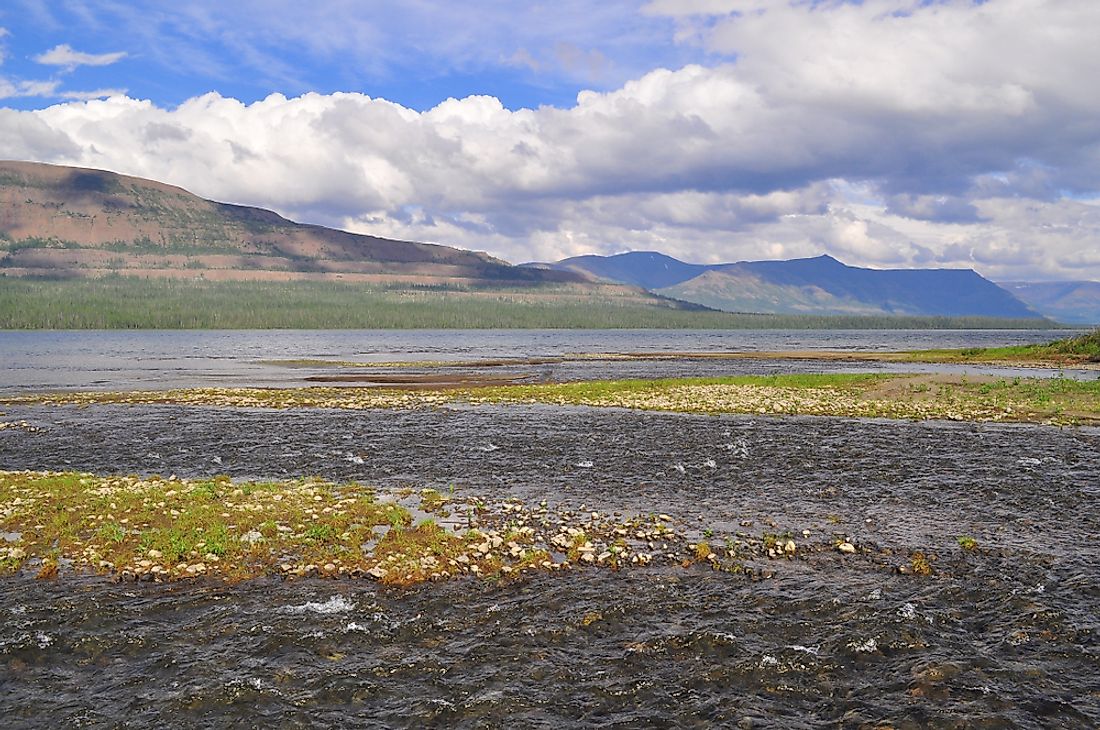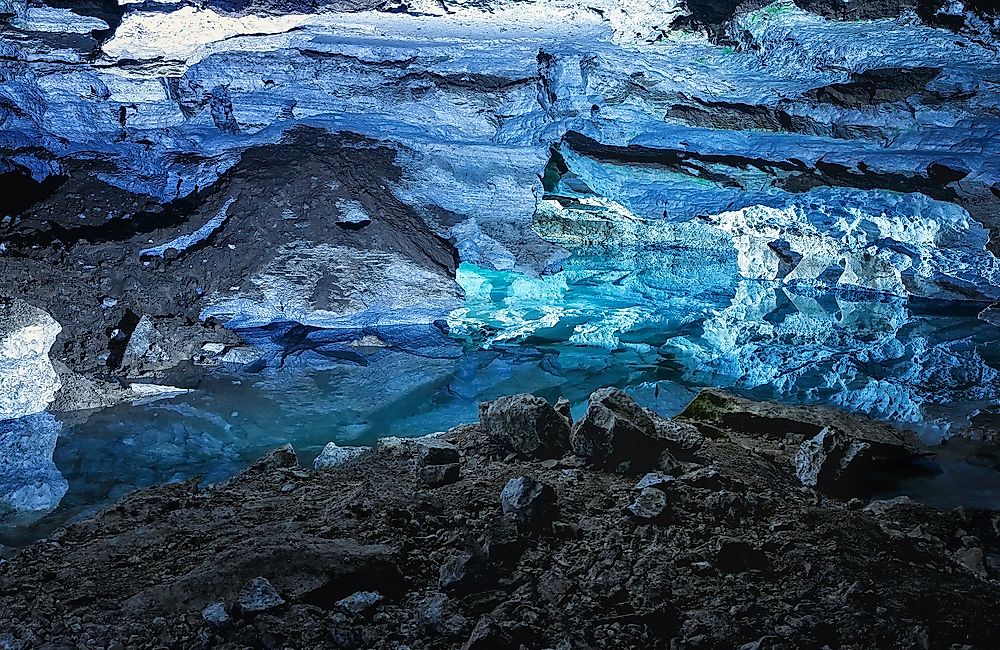The 10 Most Famous Geographical Wonders Of Russia

Russia is a vast country encompassing a great diversity of landscapes. It has some of the world’s most pristine places that are nearly untouched by humans. Here is a list of some of the most iconic geographical features of Russia:
10. Lena’s Stone Forest

Lena Pillars is a natural site comprising of a cluster of pillars of rock about 490 to 980 feet high along the Lena River’s banks in eastern Siberia. The landform is estimated to have formed in the Cambrian period. In 2012, the Lena Pillars Nature Park was inscribed as a UNESCO World Heritage Site. The rock pillars present here are made up of alternating layers of limestone, dolomite, slate, and marlstone. Most tourists visiting the site arrive here via cruises on the Lena River. Hiking in the region is an extremely dangerous activity.
9. The Valley of Geysers
Located in the Kamchatka Peninsula, the Valley of Geysers is the world’s second biggest concentration of geysers. There are about 90 geysers and many hot springs in the area. Most of these are concentrated on the Geysernaya River’s left bank. The site is part of the UNESCO World Heritage Site called the "Volcanoes of Kamchatka”. The region is difficult to access with helicopters being the only feasible means to reach the area.
8. The Golden Mountains of Altai

This scenic site in Russia comprises several important geographical features including the Ukok Plateau, Belukha Mountain, Lake Teletskoye, and two nature reserves. The site was designated as a World Heritage Site by the UNESCO in 1998. Here, there are distinct altitudinal vegetation zones ranging from steppes and mixed forests at lower altitudes to alpine vegetation at the top altitudes. The region is also noted for being the home of many endangered species of mammals like the Altai argali and the snow leopard.
7. Uvs Lake Basin
Located on the international border area between Russia’s Tuva and Mongolia, the Uvs Lake Basin is an endorheic basin that is named after the Uvs Lake located at the western section of the basin which is also called the Ubsunur Hollow. The terrain of the Hollow features a variety of landforms including desert, taiga, alpine meadows, alpine tundra, and also glaciers. The different ecosystems in the region support a great diversity of plant and animal life. The endangered snow leopard, Siberian roe deer, demoiselle crane, Mongolian Lark, Caspian red deer, etc., are some of the notable species found in the area.
6. Virgin Komi Forests
The Ural Mountains in Russia’s Komi Republic is home to the Virgin Komi Forests, Europe’s largest virgin forest. The forests encompass an area of 32,800 square km. The Siberian fir, Siberian larch, and the Siberian spruce are the dominant plants growing there. The forest also hosts many animals including large populations of reindeer, mink, and sable. In 1995, the Virgin Komi Forests were designated as a UNESCO World Heritage Site. However, despite the prestigious designation, the forest continues to suffer from illegal mining and logging activities.
5. Putorana Plateau

The Putorana Plateau, a UNESCO World Heritage Site, is one of the most astounding natural landforms in Russia. It is a basalt plateau whose highest point is the 5,600 feet tall Mount Kamen. The plateau is located in the Central Siberian Plateau’s northwestern edge. The area is one of the world’s largest nickel reservoirs. Lake Vivi, the country’s geographical center is located here. The Talnikovy Waterfall which is often regarded as the tallest waterfall in Asia is also a part of this landscape. Over 25,000 lakes are present in the region which together constitute the second largest freshwater reservoir in the country after Lake Baikal. The world’s largest herd of reindeer can be seen in the Putorana Nature Reserve in the area.
4. Uzon Caldera
An interesting, out-of-the-world-appearing landscape exists at the site of the Uzon Caldera in the eastern part of the Kamchatka Peninsula. The caldera measures 9 km by 12 km and is estimated to have formed in the mid-Pleistocene epoch. The Uzon and the Geyzernaya caldera together host the region’s largest geothermal field. A few lakes are also located in the area. The caldera is home to extremophiles which are microbes that can tolerate extremes of conditions.
3. The Kungur Ice Cave

The Urals in Russia hosts the Kungur Ice Cave that is well-known for its ice formations. The karst cave is located on the Sylva River’s right bank close to the Kungur town in Perm Krai. Since 1914, the cave has been used as an excursion site. An interesting legend is associated with the cave. A set of narrow steps made of stone is located in the cave. It is believed that many years ago, a princess from a foreign nation tripped and fell on the stairs. Once she returned back to her kingdom, she got married. Today, it is said that if a woman falls down on these steps, she is bound to get married soon.
2. The Volcanoes Of Kamchatka
The Kamchatka Peninsula is home to a large number of volcanoes. Six sites with a total of 29 active volcanoes in the region have been included as a UNESCO World Heritage Site called the Volcanoes Of Kamchatka. The 15,584 feet tall Klyuchevskaya Sopka is the Northern Hemisphere’s largest active volcano. Another famous volcano in the region is the Kronotsky which is regarded by many volcanologists as the world’s most beautiful volcano due to its perfectly shaped cone.
1. Lake Baikal

No list of Russia’s natural wonders can be complete before mentioning the Lake Baikal. The rift lake holds many records. It is the world’s largest freshwater lake by volume. It holds 23,615.39 cubic km of freshwater. The lake also holds the title of being the deepest lake in the world. It has a maximum depth of 5,387 feet. Lake Baikal is also considered to be the oldest lake in the world and one of the clearest ones. The lake is host to thousands of species of flora and fauna including many species that are endemic to the lake. Thus, it is not surprising that Lake Baikal was declared a UNESCO World Heritage Site in 1996.











